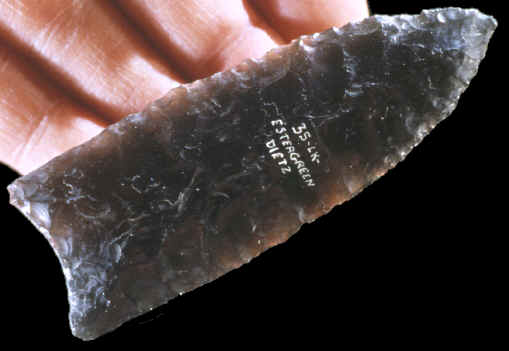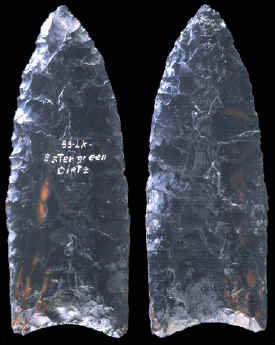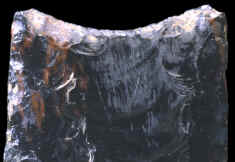|
CLOVIS POINT
LAKE COUNTY, OREGON
(AVAILABLE CAST)
PRIVATE COLLECTION
COPYRIGHT
MARCH 30, 2004 PETER A. BOSTROM

CAST
#P-46
CLOVIS POINT
(CAST ILLUSTRATED ABOVE)
LAKE COUNTY, OREGON
PRIVATE COLLECTION
This Clovis point was found by Frank and Alice Estergreen in the 1950's in
the vicinity of the Dietz Clovis site near Alkali Lake. A trace element
analysis was done on this projectile point and it was determined that the Obsidian
source was Glass Butte, Oregon.
This Clovis point has "hafting abrasion
scratches" in the basal hafting area. The side with the largest
channel flake has the most abrasion. This channel flake measures 1 1/2
inches (3.8 cm) long and 5/8 inch (1.5 cm) wide.
There is also a long narrow flake removed at the tip of
the point on one side that measures 11/16 inch (1.7 cm) long. This
may be an impact fracture.
This Clovis point is made of semi-translucent black
Obsidian and it measures 3 3/8 inches (8.5 cm) long.
|


